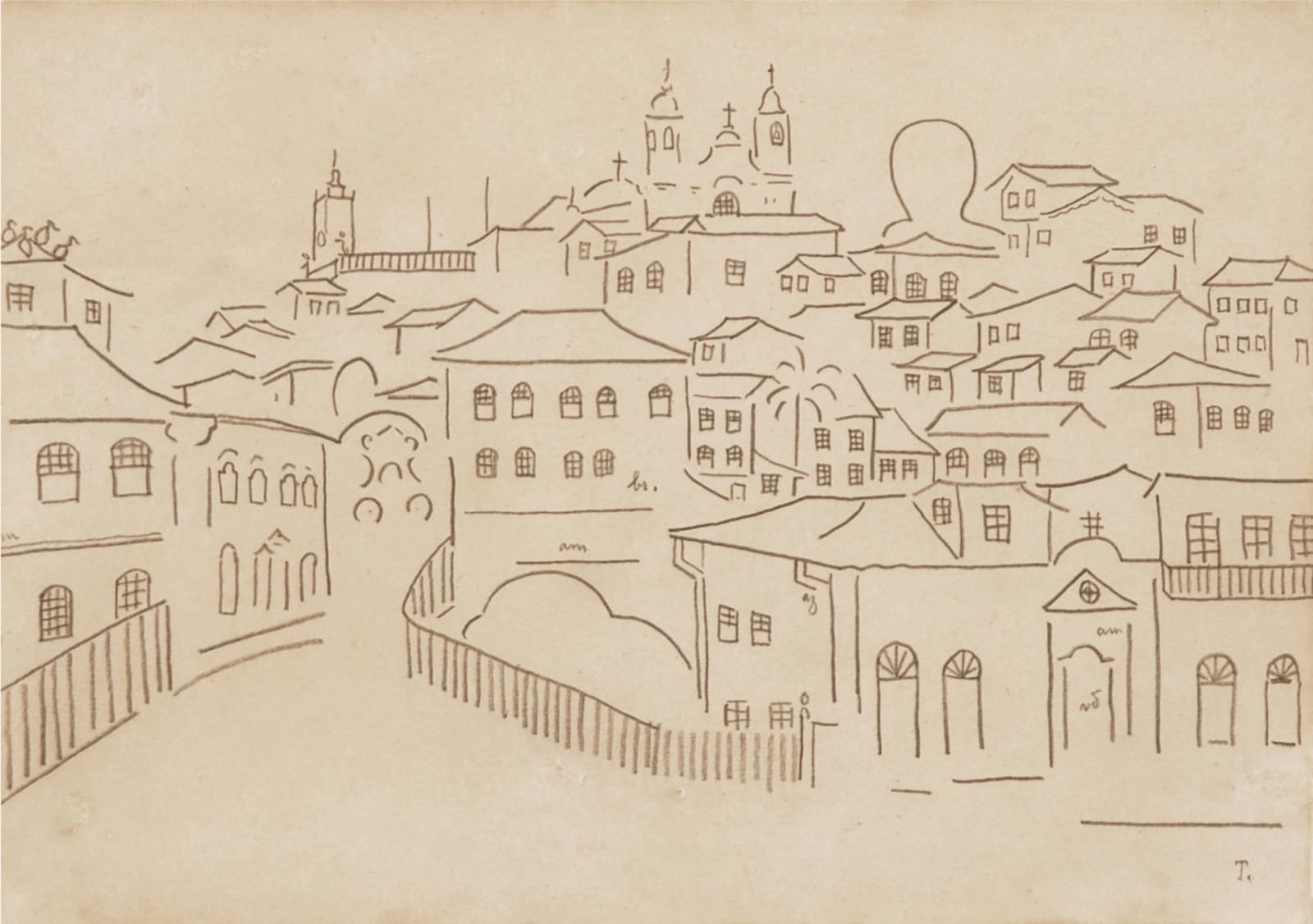
Tarsila do Amaral
6 1/8 x 8 5/8 in
In 1924, having recently returned to Brazil from Paris where she studied under the artists Fernand Léger, Albert Gleizes, and André Lhote, Tarsila do Amaral embarked with a group of intellectuals on a journey through the countryside of Minas Gerais. This excursion would not only be formative for the Swiss poet Blaise Cendrars—who accompanied the group and who would later publish a book about this journey, illustrated by Tarsila—but it was a revelation for Tarsila as well. Reflecting on her experience in 1950, Tarsila reminisced: “Contact with that land full of tradition, paintings in the churches and houses of those essentially Brazilian small towns—Ouro Preto, Sabará, São João del Rey, Tiradentes, Mariana and others—awoke in me a feeling of what it is to be Brazilian.”
Along the journey, Tarsila produced numerous sketches recording her observations of the towns and landscapes, inaugurating what would become known as her “Pau-Brasil” period. It was a time in her career when Tarsila’s desire to develop a specifically Brazilian form of modernism—infused with references to the land and its people—rapidly accelerated, her sketches capturing source material for her later paintings. In Ouro Preto II (1924), Tarsila captured a view of the town in her characteristically graceful and fluid line. Houses and churches are distilled into abbreviated contours, foreshadowing her numerous paintings of serene, colorful houses in verdant landscapes.
Join our mailing list
* denotes required fields
We will process the personal data you have supplied in accordance with our privacy policy (available on request). You can unsubscribe or change your preferences at any time by clicking the link in our emails.